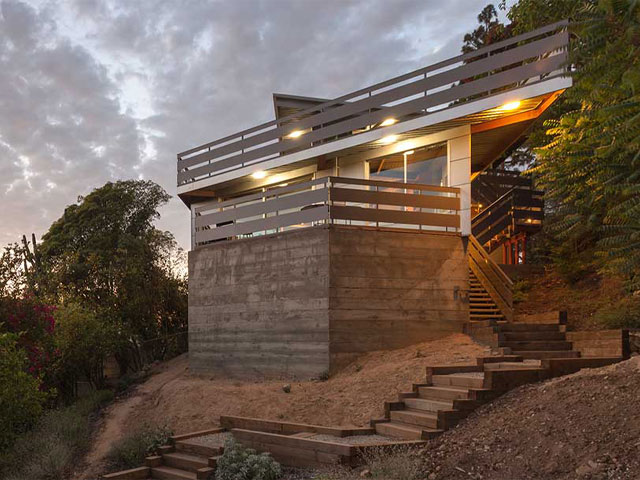6 iconic architectural styles
The defining elements of contemporary construction movements from Brutalism to Modernism
Discover the origins, ideas and defining elements of architectural styles within contemporary construction movements, from Modernism and Art Deco to Brutalism and Deconstructionist.
1. De Stijl
Spearheaded by the Dutch painter Piet Mondrian and architect Gerrit Rietveld, De Stijl is characterised by pared-down, geometric forms and primary colours.
The only building made to the movement’s exact specifications is the Rietveld Schröder House; it comprises only squares, rectangles and lines at 90° angles, in red, yellow, blue, white and black. Rather than adhering to such purist stipulations, you could introduce accents of primary colour in large, slim-framed windows.
Casa Chinkara by Solis Colomer Arquitectos. Photo: Marko Bradich
2. Modernist
A firm Grand Designs architectural style favourite, the white planar surfaces of the Modernist era ushered in an age of homes built to function around how people live and work. Its poster boy was Le Corbusier, who compiled a list of architectural principles called the Five Points.
One requirement was an uninterrupted ribbon of large, slim-framed widows – a Modernist feature that can help you to bring natural light into your project. These boxy structures are prone to cracking and warping, however, so choose an architect with previous Modernist experience.
River House by Selencky Parsons. Photo: Jim Stephenson
3. Essentialist
This movement is epitomised by the famous Fallingwater house by Frank Lloyd Wright. The style was inspired by the traditional American prairie home, which centred on the dominant communal area of the living room; you can bring this element into your project by arranging rooms with various levels around central social areas.
For inspiration, take a closer look at Tom Marble Architecture’s Tattuplex in LA, California, which emulates Wright’s signature design by including generous, cantilevered roofs and thick, overhanging balconies.

Tattuplex by Marbletecture. Photo: Taiyo Watanabe
4. Art deco
Inspired in part by the curved, technology-defined shapes of luxury ocean liners, aeroplanes and cars, art deco straddles modern and traditional design, combining rich embellishment with hard-edged symmetry and minimalist forms. These architectural styles grew in tandem with the re-establishment of Paris as an artistic Mecca during the twenties.
Today the movement still represents glamour and exuberance. You can avoid mere pastiche by integrating bold shapes and rectilinear edges into your architectural features. The battlements of Los Limoneros in Spain by Gus Wüstemann Architects is a great example, giving a modern update to the geometry found in the opulent facades of theatres and cinemas built in the art deco style.
Los Limoneros by Gus Wüstemann Architects. Photo: Bruno Helbling
5. Deconstructivist
Thanks to cutting-edge computer modelling and engineering, architecture is braver and more abstract than ever. The organic, fluid forms of Zaha Hadid characterise this style – structurally complex, with undulating shapes.
Current icons include buildings commissioned by the commercial sector, such as London’s Serpentine Gallery extension. Work a simpler version into your project with expanses of glass overlaid with angled facades, as in KLab Architecture’s Paradox House in Athens.
Paradox House by KLab Architecture. Photo: Panos Kokkinias
6. Brutalist
A controversial and misunderstood movement, Brutalism architectural styles flourished in the 50’s and 60’s. It’s characterised by stark, slab-like forms – famous examples include London’s Barbican and the sprawling, raw concrete cultural centres of the South Bank. The rough appearance was partly a rejection of the white, crisp rendering of Modernism, but there was also a practical element: these buildings needed to fill large spaces left behind after the Blitz.
The style is often associated with concrete, but some of the early designs were actually constructed from steel, glass and brick. For a nod to Brutalism, incorporate just one aspect, such as its impenetrable, blunt silhouette. The Luker House in London uses sandstone brick to great effect. It actually won Jamie Fobert Architects the RIBA regional and national awards in 2014.
Luker House by Jamie Fobert Architects. Photo: Olivier Hess








